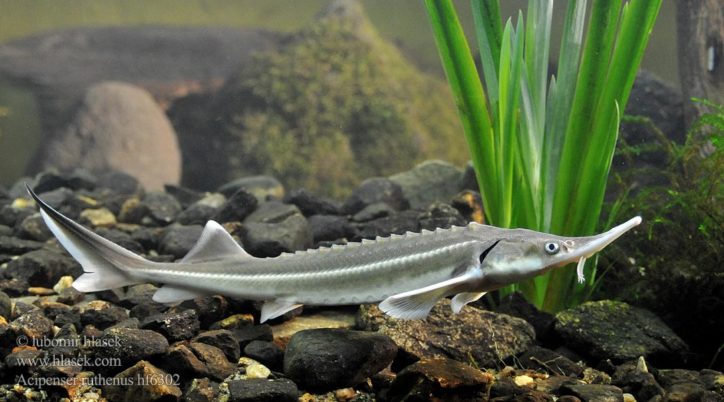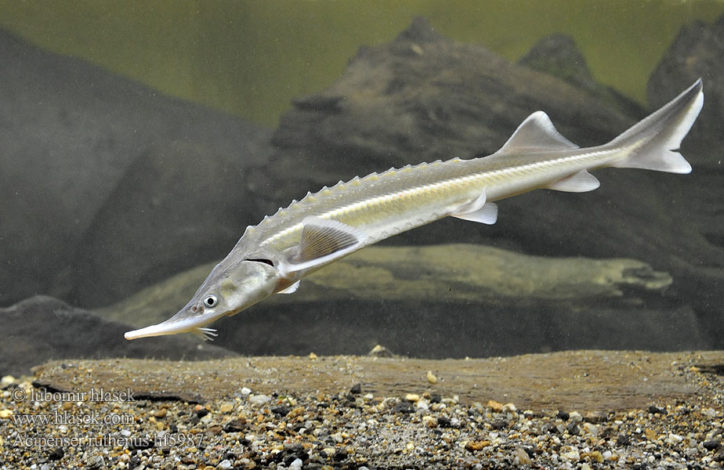Fish of the Acipenser genus of the Acipenseridae family of the Acipenseriformes order of the Chondrostei subclass.

(Sterlet. Photo by © Lubomir Hlasek. hlasek.com)
Sterlet (Acipenser ruthenus) was first described in 1758 by the Swedish scientist Carl Linnaeus (1707 – 1778). It inhabits the rivers of the basins of the Black Sea, the Sea of Azov and the Caspian Sea. It sticks to the bottom of deep areas of rivers, with a strong current as a rule. The recorded maximum length is 125 cm. Specimens up to 40 cm long are more common. The maximum weight is 16 kilograms. It feeds on maggots, scuds, caddis flies, as well as mollusks, leeches and small fish.

(Sterlet. Photo by © Lubomir Hlasek. hlasek.com)
It inhabits the Danube and its major tributaries (the Sava, Drava, Mura Rivers, etc.) flowing through the territories of Bosnia and Herzegovina, Slovenia and Croatia.
It is listed in the IUCN Red List as a vulnerable species (VU).
Names of Sterlet (Acipenser ruthenus) in other languages are as follows:
Blini me yje (Albanian), Чига (Chiga) (Bulgarian), Jeseter malý (Czech), Sterlet (Dutch), Sterlet (French), Sterlet (German), Οξύρρυγχος ο μικρός (Oxyrrinhos o mikros), Στερλέτος (Sterletos) (Greek), Kecsege (Hungarian), Sterleto (Italian), Sterlet, Czeczuga (Polish), Sterlet (Portuguese), Cegă (Romanian), Стерлядь (Sterljadj) (Russian), Kečiga (Croatian, Slovenian), Dugonosa kečiga (Serbian), Esterlete (Spanish), Çiga balığı (Turkish).